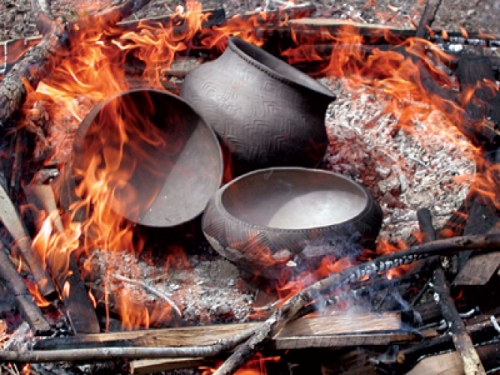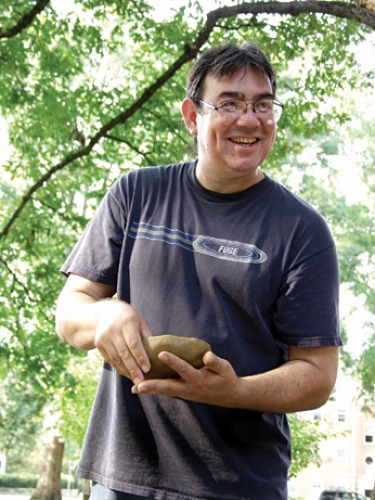Davy Arch can’t help but be in a good mood. He’s standing on a sunny Carolina quad. The breeze brings a mockingbird’s trill, a murmur of Franklin Street traffic, and the soft smacking of dozens of hands on wet clay.
Arch is on campus with two fellow Cherokee potters, Betty Maney and Bernadine George, to teach students how to make pottery using traditional Cherokee techniques. The students are a hands-on bunch. Laptops are off. They’re shaping bowls. They’re stamping designs with carved wooden paddles.
Arch and the other potters are passing on a few things they learned when Carolina’s Research Labs of Archaeology took about 25 Cherokee pots, some of them 500 years old, to the town of Cherokee. The potters analyzed those pieces intensively to learn more about the older, more distinctively Cherokee ceramic styles. In the late 1800s, Cherokee potters discovered that Catawba pottery sold well to tourists, so they began adapting Catawba styles in their own work. Eventually, traditional Cherokee pottery styles were all but forgotten.
Arch has been around clay ever since his grandmother scooped it from the stream behind her house to keep him busy while she hung out clothes to dry. But seeing the ancient Cherokee pieces still moved him. “Those old pots were mind-boggling,” he says. “It was amazing that the potters were able to make huge pots with very thin walls.”
“Some of these potters are descended from the folks who made the nineteenth century vessels we have in this collection,” says Brett Riggs, research archaeologist at Carolina. “Now we’re taking an archaeological collection and putting it to use for the modern native community.”




